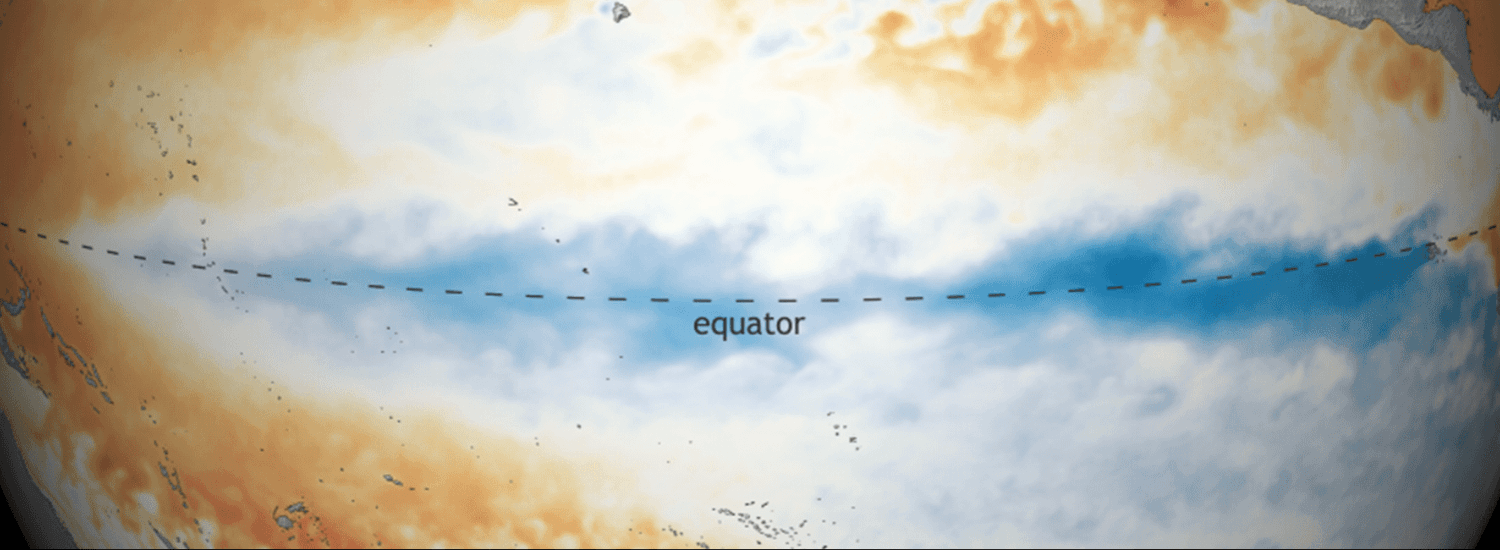How Will Climate Change Change El Niño and La Niña?

As human-caused climate change disrupts weather patterns around the world, one overarching question is the subject of increased scientific focus: how it will affect one of the world’s dominant weather-makers?
The future of the El Niño Southern Oscillation, or ENSO, is the subject of a new book published by the American Geophysical Union. With 21 chapters written by 98 of the world’s leading experts, the volume covers the latest theories, models, and observations, and explores the challenges of forecasting El Niño and La Niña. The book, El Niño Southern Oscillation in a Changing Climate, was published online on November 2.
ENSO is a cycle of warm El Niño and cool La Niña episodes that happen every few years in the tropical Pacific Ocean. It is the most dramatic year-to-year variation of the Earth’s climate system, affecting agriculture, public health, freshwater availability, power generation, and economic activity around the globe.
“This is the first comprehensive examination of how ENSO, its dynamics and its impacts may change under the influence of rising greenhouse gas concentrations in the atmosphere,” said Michael McPhaden, Senior Scientist with NOAA’s Pacific Marine Environmental Laboratory in Seattle and co-editor of the new volume.
During El Niño, chances for drought increase across India, Indonesia and Australia and a large part of the Amazon, while the southern U.S. tends to see more precipitation. During La Niña, the pattern is effectively reversed, with wetter conditions for Indonesia, Australia and parts of the Amazon, and dry conditions in the southern tier of the U.S. In September, NOAA’s Climate Prediction Center announced that a La Niña had developed in the Pacific and was likely to last through the Northern Hemisphere winter.
The new book, three years in the making, tracks the historical development of ideas about ENSO, explores underlying physical processes and reveals the latest science on how ENSO responds to external factors such as climate phenomena outside the tropical Pacific, volcanic eruptions, and anthropogenic greenhouse gas forcing.
Antonietta Capotondi, a CIRES scientist working at NOAA, said in recent decades, scientists have come to appreciate how significantly ENSO impacts can vary from event to event. "No two El Ninos or La Ninas are perfectly alike," Capotondi said. "We've seen how diverse ENSO events can be. This diversity adds another degree of complexity for understanding how climate change will influence future ENSO events.”
So how are ENSO impacts likely to evolve in the coming decades?
“Extreme El Niño and La Niña events may increase in frequency from about one every 20 years to one every 10 years by the end of the 21st century under aggressive greenhouse gas emission scenarios,” McPhaden said. “The strongest events may also become even stronger than they are today.”
In a warming climate, rainfall extremes are projected to shift eastward along the equator in the Pacific Ocean during El Niño events and westward during extreme La Niña events. Less clear is the potential evolution of rainfall patterns in the mid-latitudes, but extremes may be more pronounced if strong El Niños and La Niñas increase in frequency and amplitude, he said.
Some ENSO impacts are already being amplified, such as the extensive coral bleaching and increases in tropical Pacific storm activity observed during the 2015-16 El Niño. ENSO is expected to impact tropical cyclone genesis in the future as it does today in the Atlantic, Pacific and Indian Oceans, but precisely how is still an open question.
This story was written by NOAA Communications.